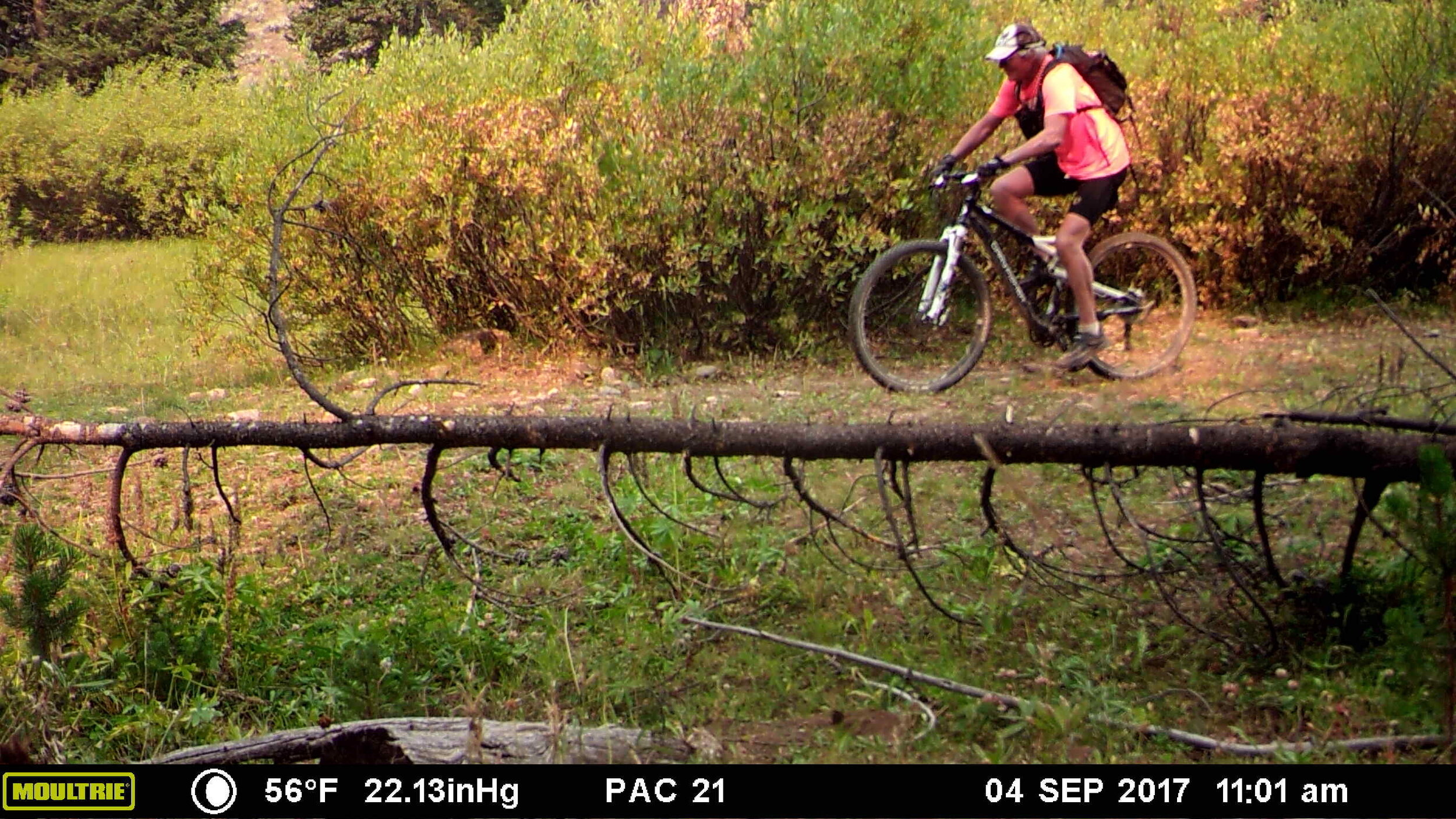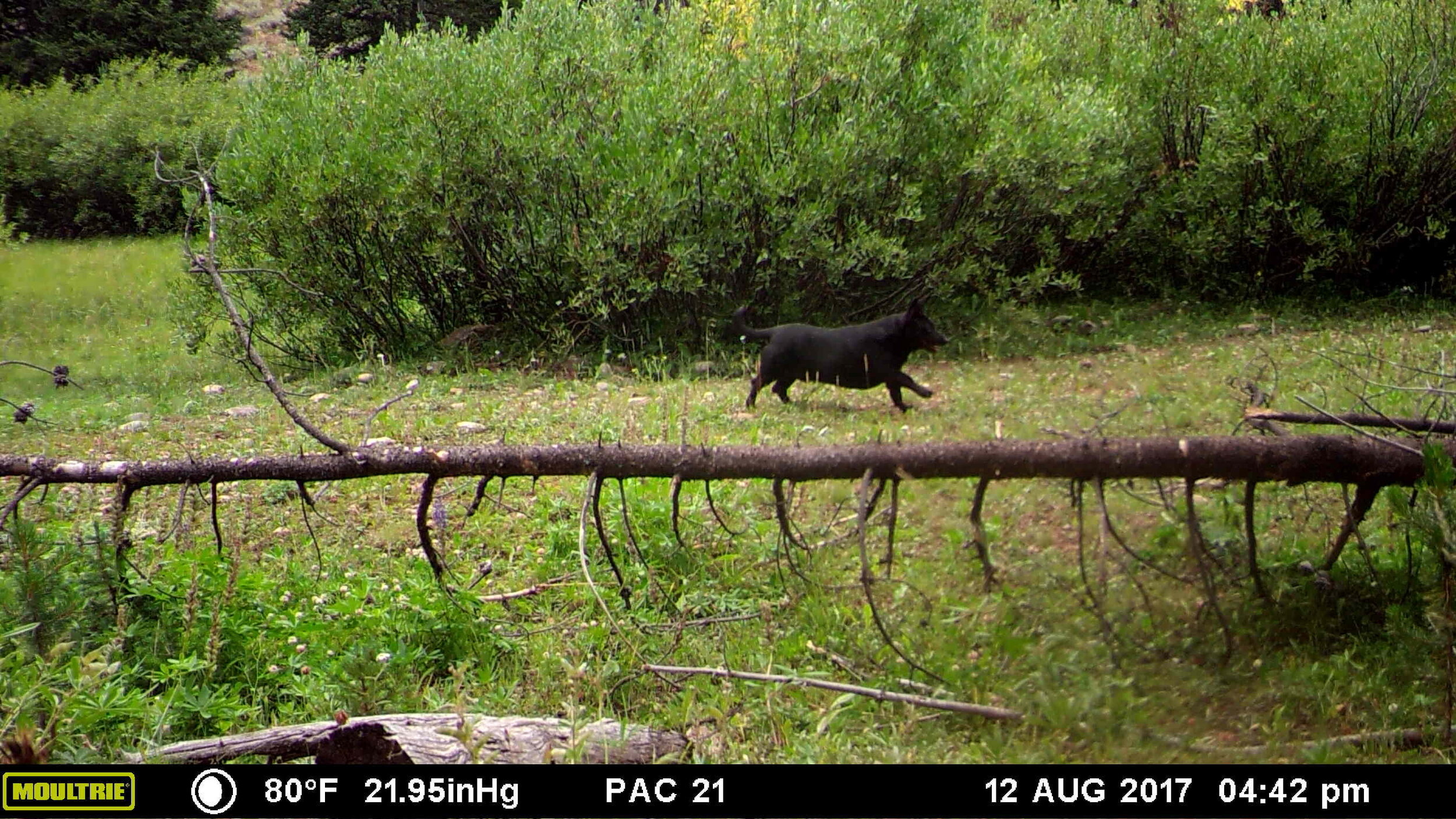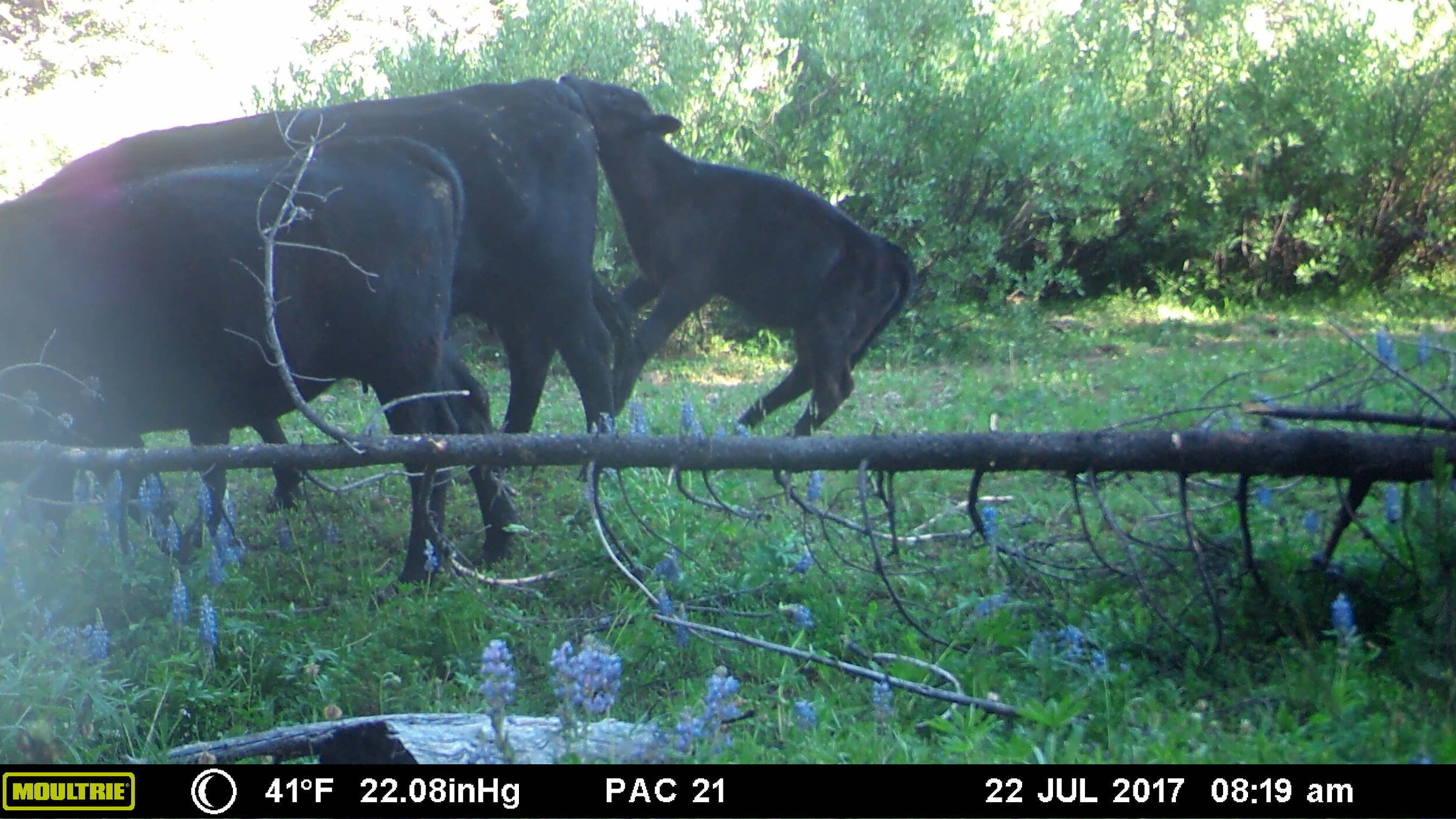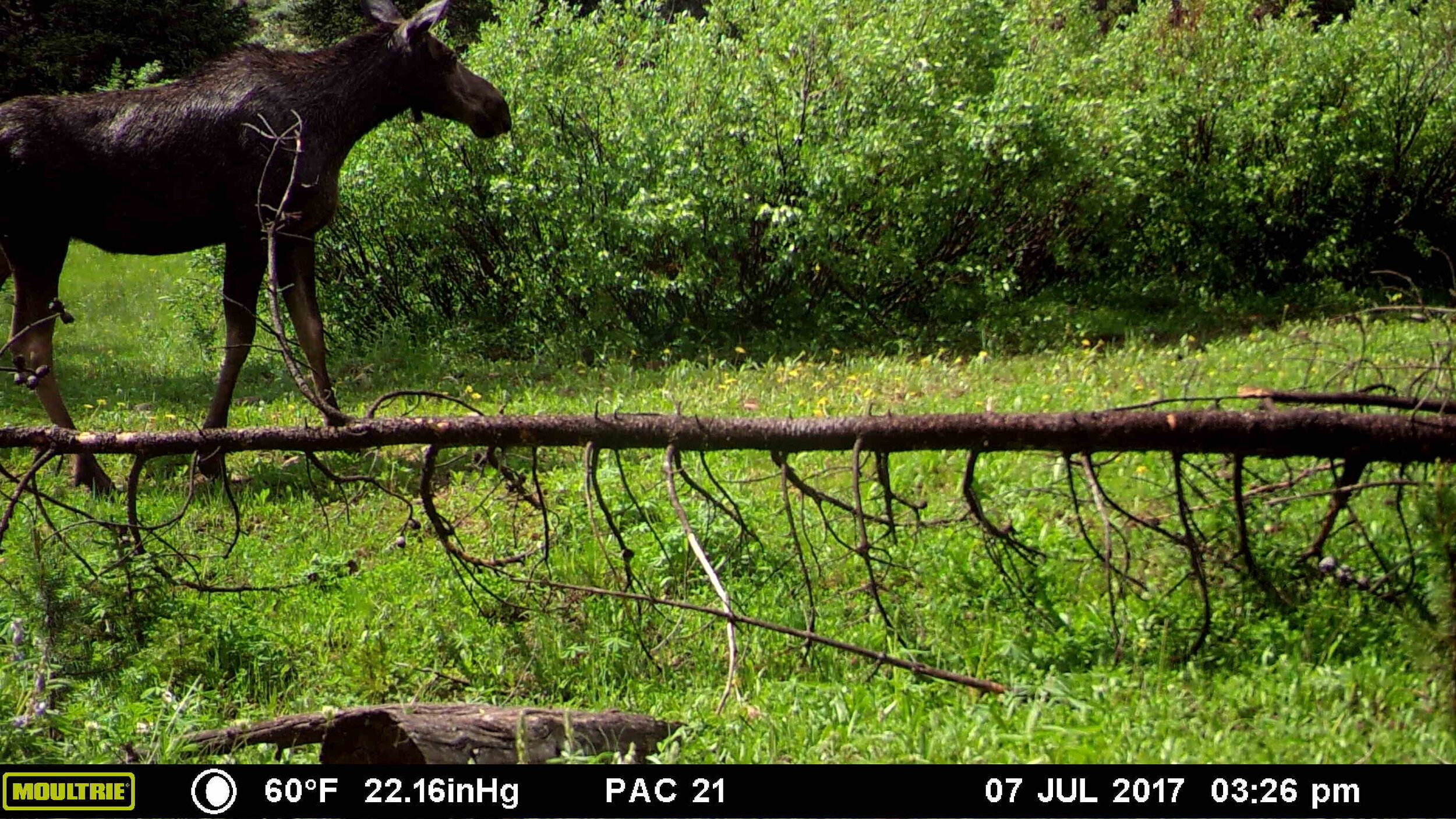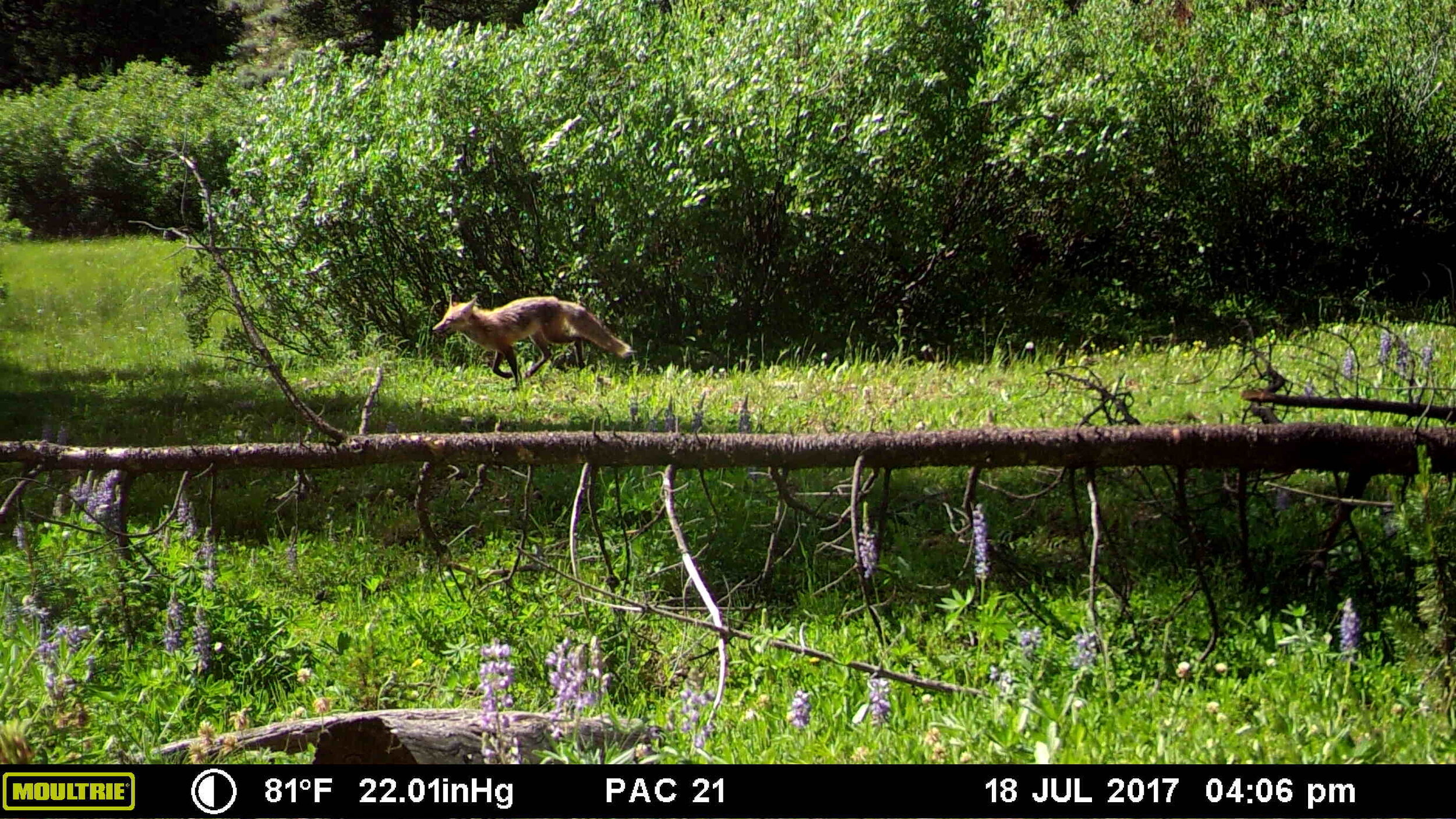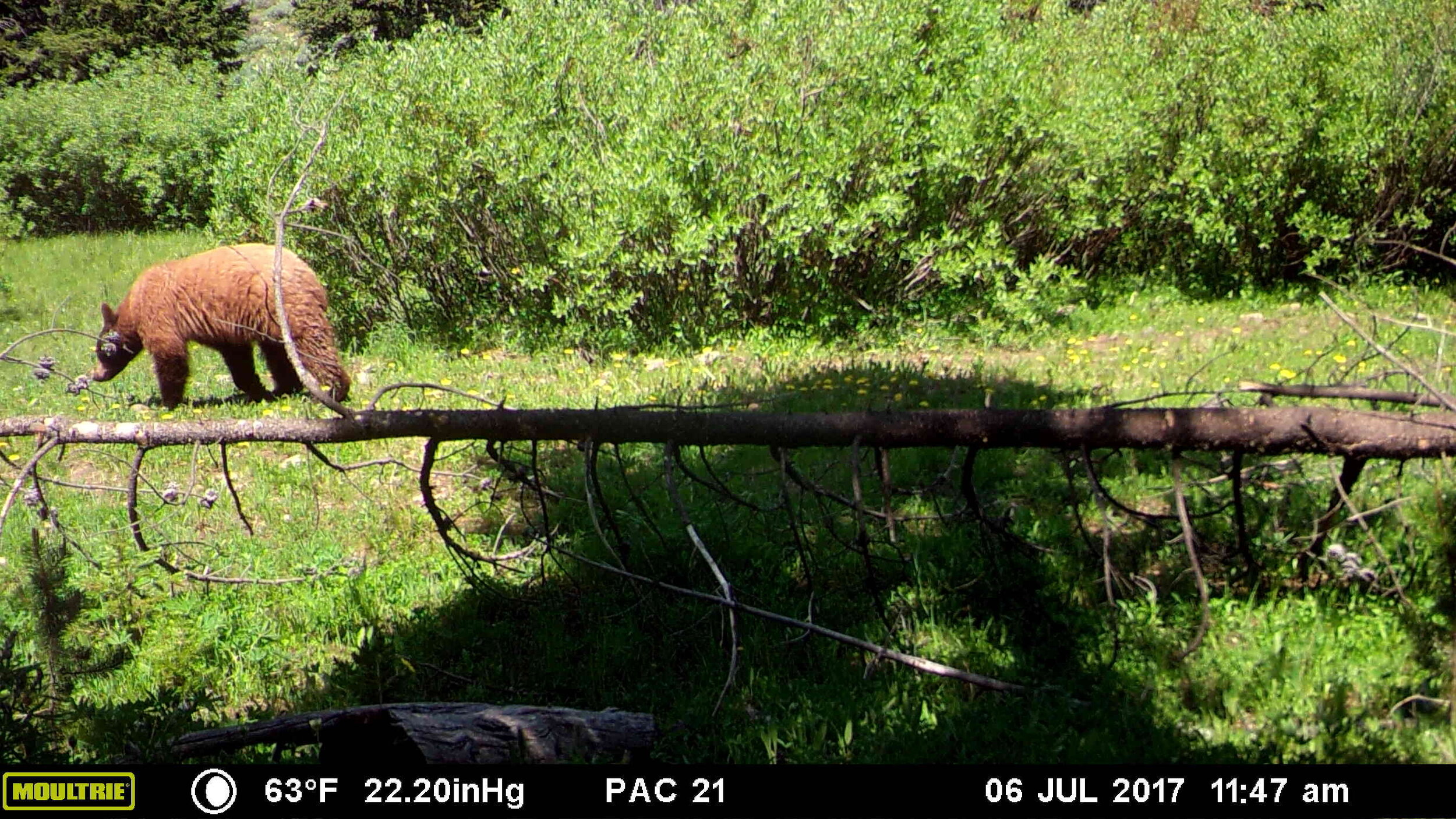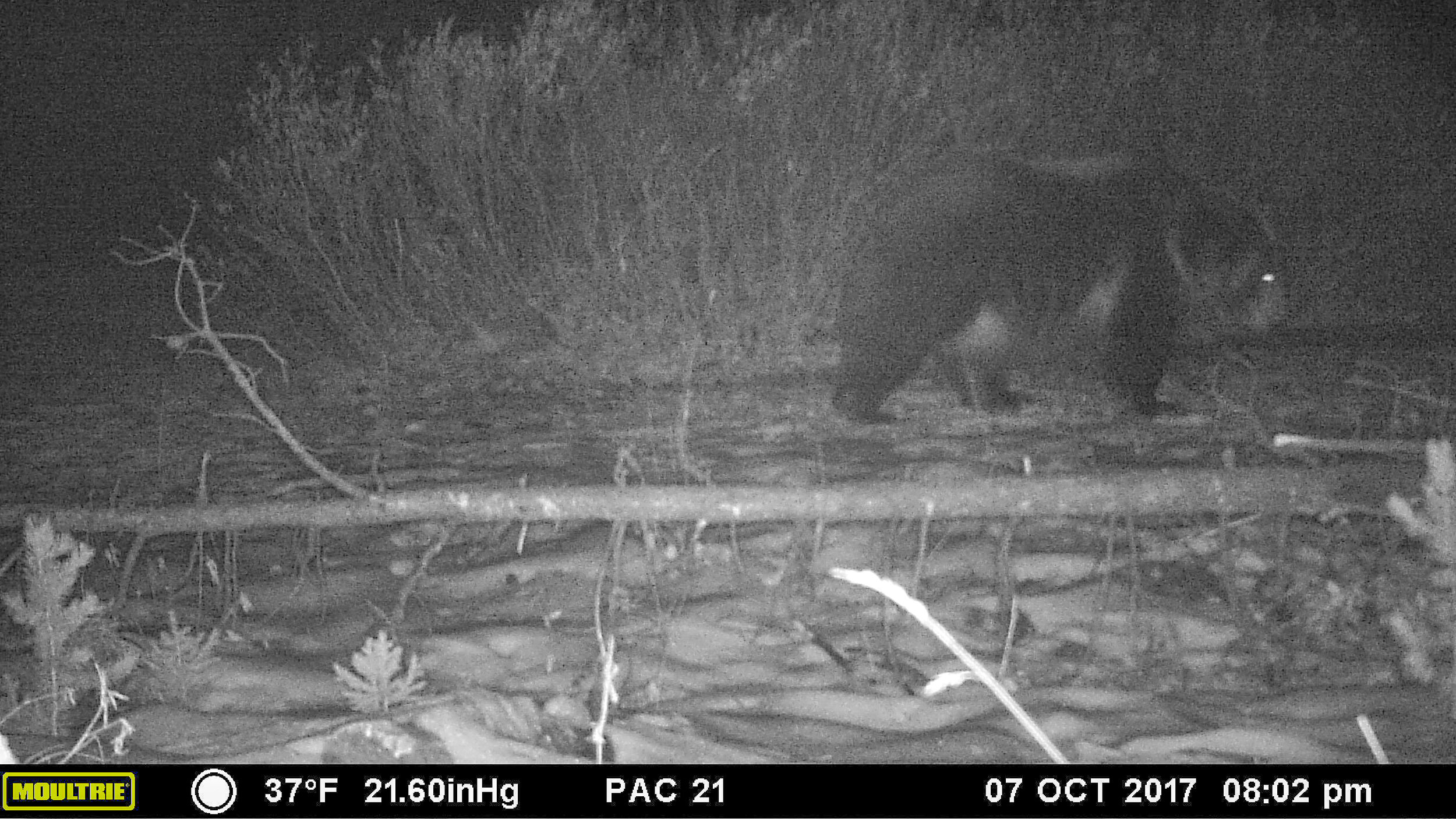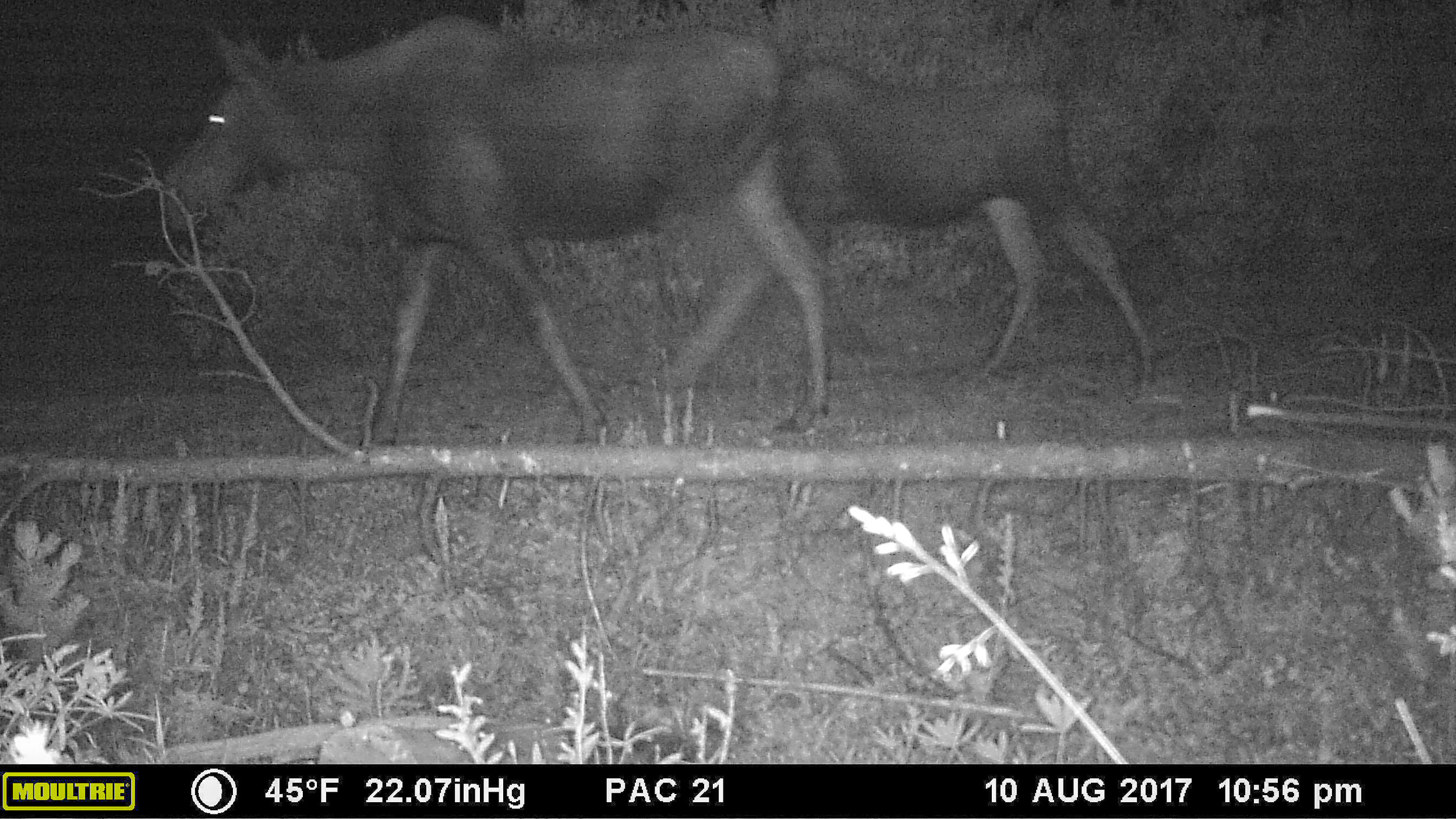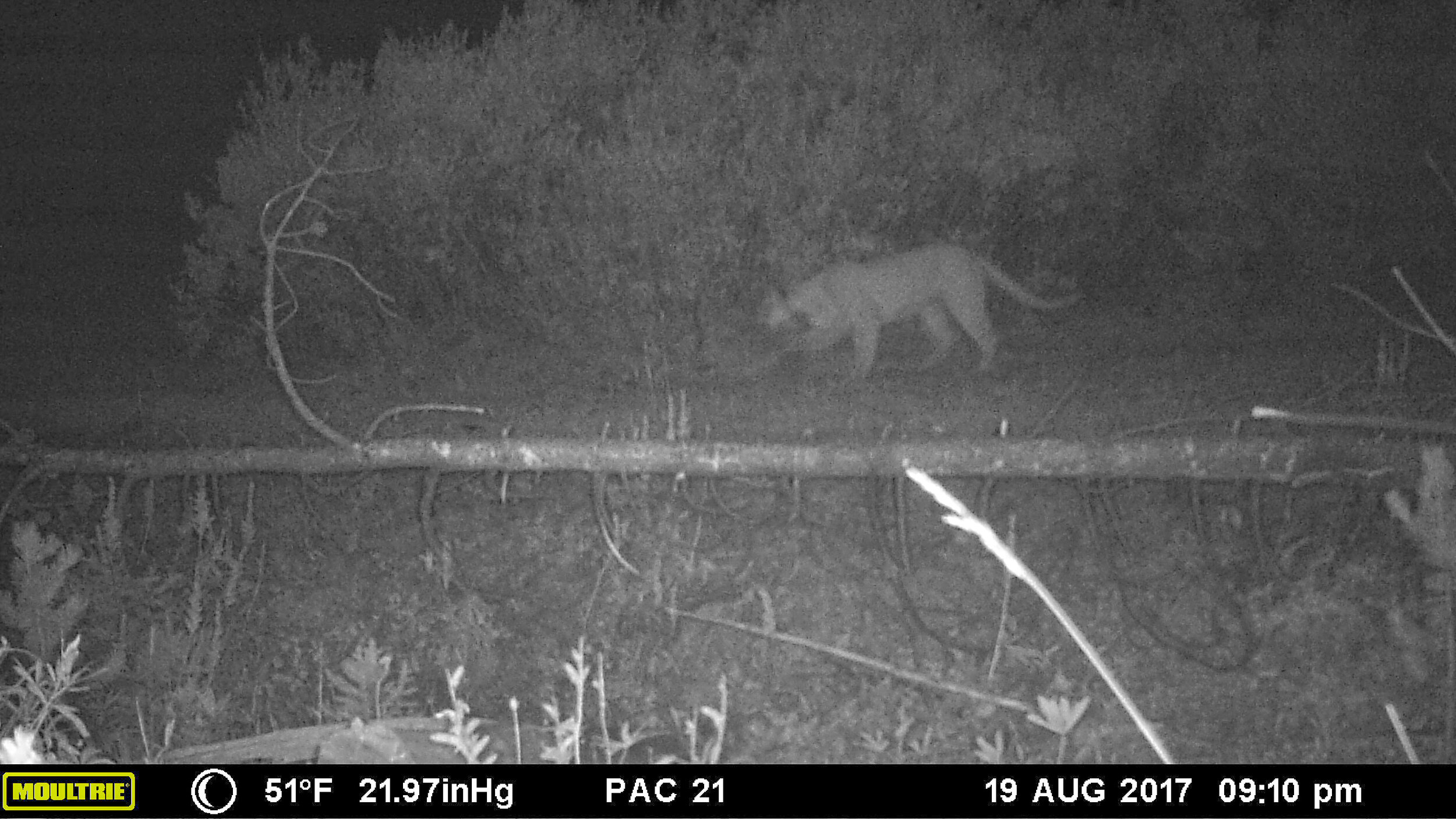Keeping an eye on carnivores
By Martha Sellers
As we top the rise and start down the other side toward the meadow, our eyes keep up a constant sweep of the dry dusty trail edges, hoping to spot at least one print—grizzly or wolf—to confirm we are on the right track. Thirty feet forward we strike gold—multiple prints in some well-positioned mud.
Matt Barnes and I are walking along rugged trails and across diverse terrain—muddy clay, willows, woods—looking for ideal locations to place trail cameras. The landscape is massive; our 14 cameras can’t begin to do it justice, but the challenge is a familiar one. Choosing the best locations depends on knowledge, experience, and a bit of luck.
Trail cameras are one of many resources People and Carnivores uses to determine the presence and activity of wolves, bears, cougars, and other wildlife, as well as to test some of our coexistence tools (see blog posts from March 21 and April 6). Rugged and waterproof, the cameras are painted camouflage to blend in to their surroundings and remain hidden from passing animals. They have built-in motion sensors that detect movement. When the motion sensor detects something moving into its frame of vision, the camera awakens to snap a photo or video. To remain discrete during the night, modern trail cameras use infrared technology instead of a traditional flash to capture moving subjects against the blackness.
The first known trail camera image is credited to George Shiras, a lawyer and U.S. representative from Pennsylvania who began photographing wildlife in 1889, using camera traps and an early method of flash photography that he called “flashlight trapping.” Initially interested in photographing game for hunting pursuits, he soon became a passionate chronicler and protector of wildlife and was instrumental in the creation of several national parks and refuges.
The technology we use is more advanced than Shiras enjoyed, but the purpose is the same: document wildlife in order to protect it. Matt chooses a tree, secures a camera, tests it, and steps back. As we move on, swatting mosquitos with one hand and holding bear spray with the other, we’re mindful of the uncertainty of our work and hopeful we’ve selected another ideal location on this massive landscape. We’ll return in a month to collect our cameras and see if we’re right.
The gallery below features just a few of the images that were captured from one of our trail cameras during the summer of 2017. Talk about a mixed-use trail!
